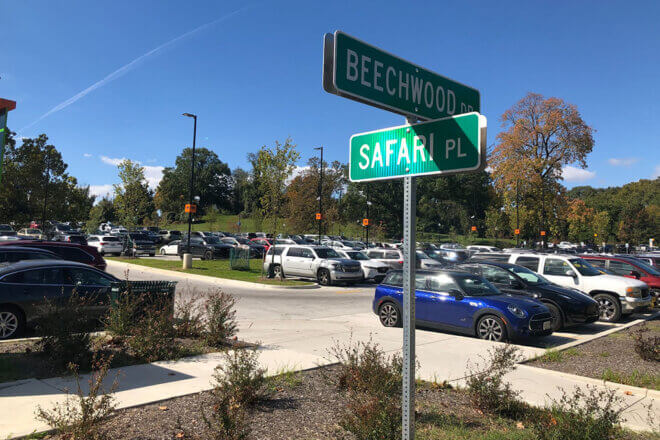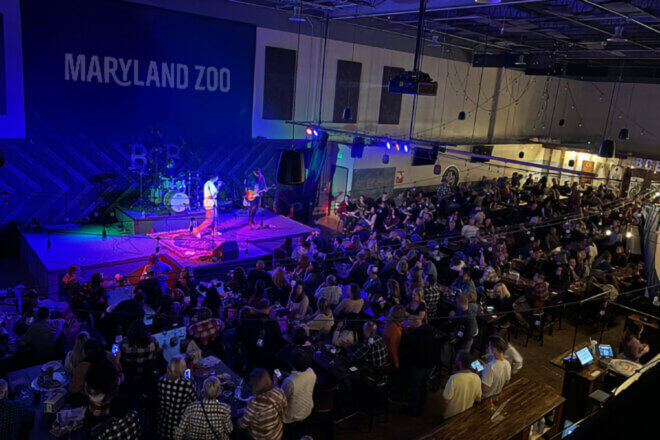The lot features a state-of-the-art water runoff collection system, and covered bike parking
BALTIMORE, MD – There’s now a better way to roll your crew into the Maryland Zoo. After a decade of planning and a year of construction, The Zoo has completely overhauled its parking lot to provide a superior experience for guests, whether they arrive by car, bike, or on foot.
The new lot includes:
- A state-of-the-art system to filter and store rainwater in underground tanks. By temporairly storing water, the system takes pressure off the Jones Falls during major storms before the stored water is slowly released into the watershed.
- New wayfinding signage that helps educate visitors about the Zoo’s many animal conservation programs.
- An elevated crosswalk to improve pedestrian safety between the lot and the Zoo’s main entrance.
- Concrete paving materials that reduce ambient temperatures in the summer. The lighter surface color won’t get as hot as asphalt. In tests by Zoo staff, it was 10-15 degrees cooler than asphalt on hot days.
- Downward-facing smart lighting to decrease light pollution and electricity usage by dimming automatically when no one is around.
- New, covered bike parking with equipment to inflate tires and do minor repairs.
- A large number of newly-planted native trees with permeable paving and special aeration matting to protect existing trees and promote future growth.
“The previous parking lot surface had become too difficult to navigate and we wanted to have better water runoff controls,” said Maryland Zoo President & CEO, Kirby Fowler. “Our guests and visitors to Druid Hill Park let us know we needed to provide something better, and the new lot does just that,”
“The lot isn’t just better for motorists, cyclists, and pedestrians, the downward facing lighting makes it better for migrating birds, and the rainwater collection system makes it better for the environment,” Fowler said.
The new lot is part of the Zoo’s detailed Sustainability Plan that will reduce energy and water consumption while incorporating green practices into every facet of the Zoo’s management and operations. You can read more about the Sustainability Plan here.
The old parking lot, which had a cement lattice surface, was considered cutting edge when it was installed in the 1970s. The pavers were intended to allow rainwater to seep into the ground but, over the years, the surface compacted and rainwater runoff was increasingly problematic. The materials also weren’t easy to navigate on foot, stroller, or wheelchair. Potholes and ruts developed making it difficult to even drive over.









Share this article